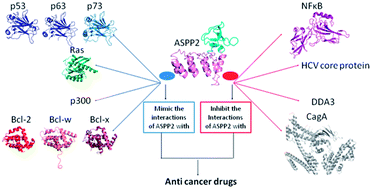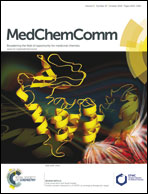Protein–protein interactions of ASPP2: an emerging therapeutic target
Abstract
The pro-apoptotic ASPP2 protein plays a central role in regulating apoptosis in both p53-dependent and p53-independent pathways. It has become clear in recent years that ASPP2 plays also a role in other important cellular processes like senescence and regulating cell polarity. ASPP2 interacts with numerous proteins in order to exert its pro-apoptotic effect while some other proteins inhibit its pro-apoptotic activity. These interactions are emerging potential targets for activation or inhibition. Drugs that activate ASPP2 may not only induce apoptosis of cancer cells, but also affect other disease-related cellular pathways. Here we review the interactions of ASPP2 with its partner proteins and their potential targeting for drug development.


 Please wait while we load your content...
Please wait while we load your content...